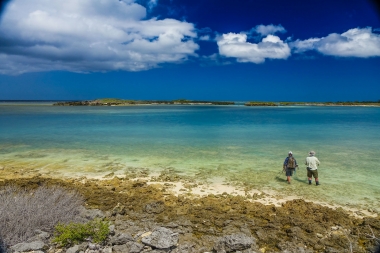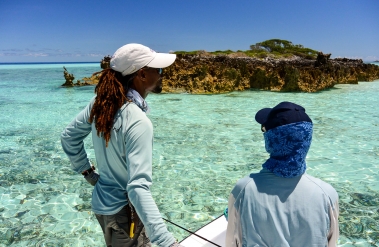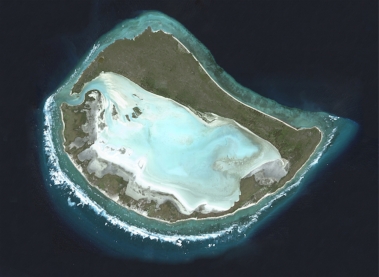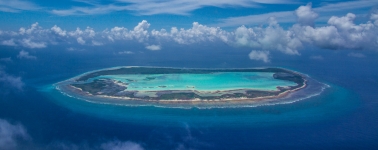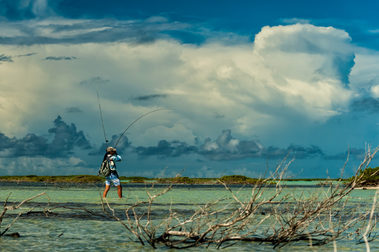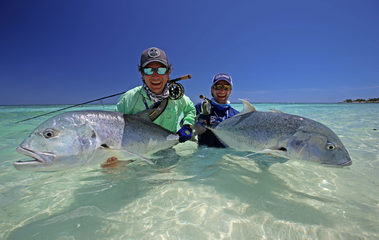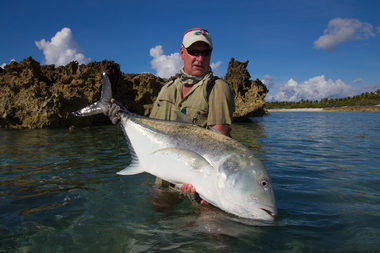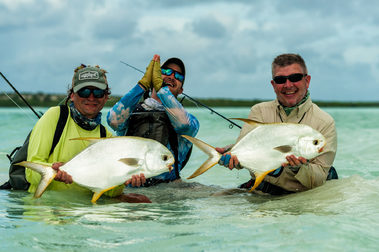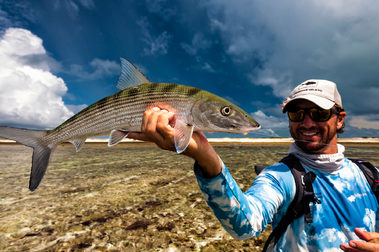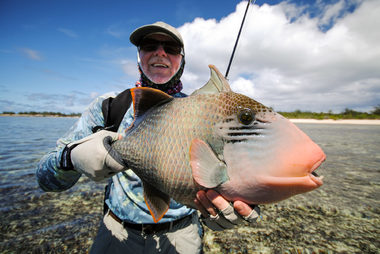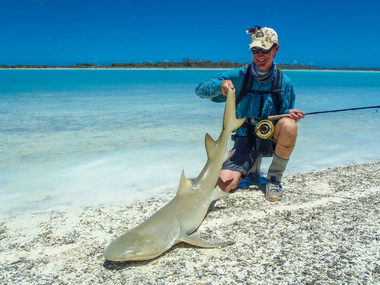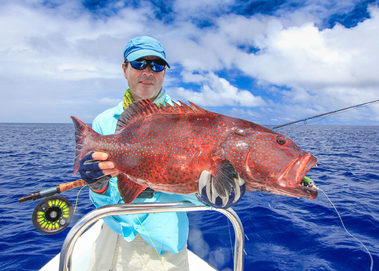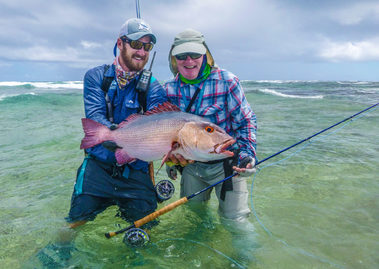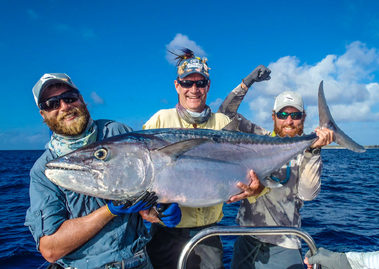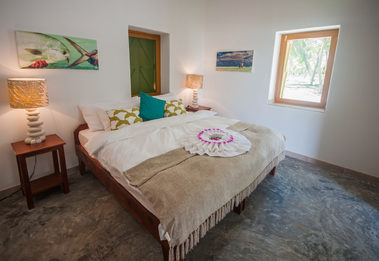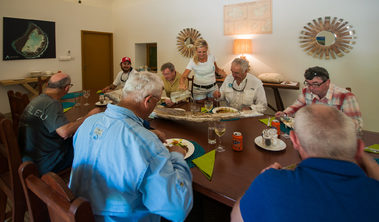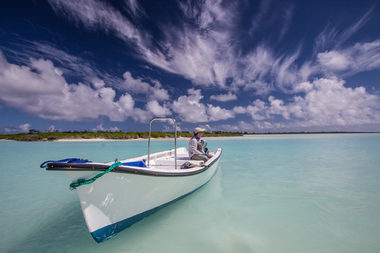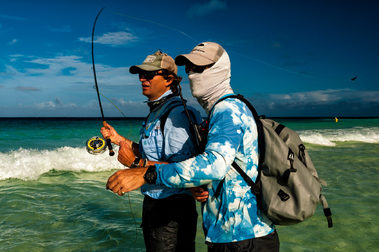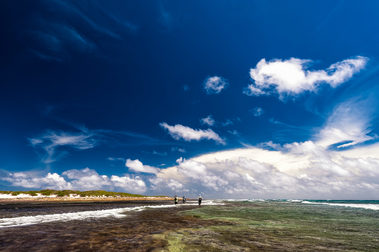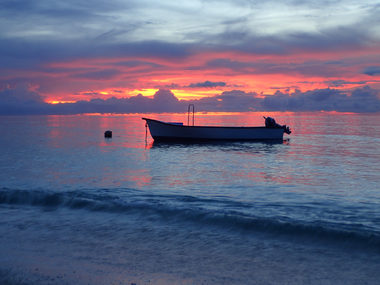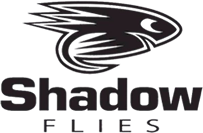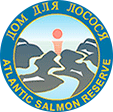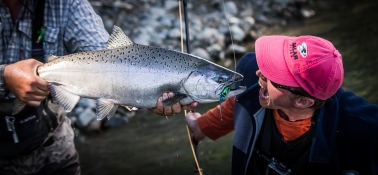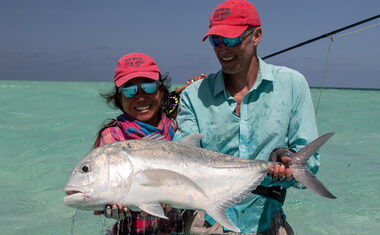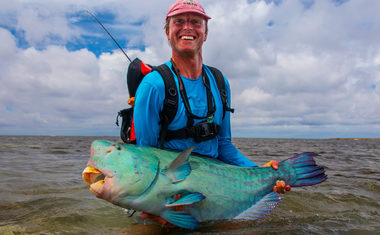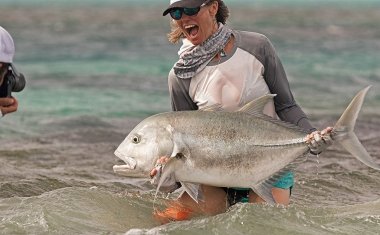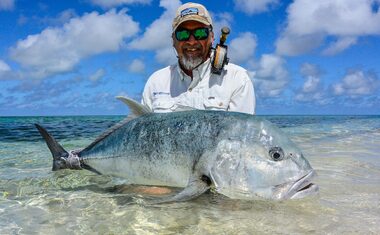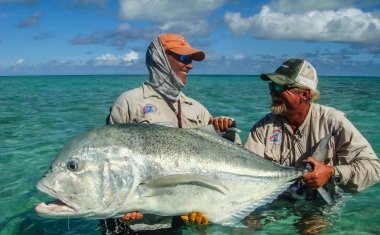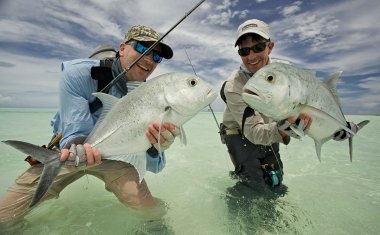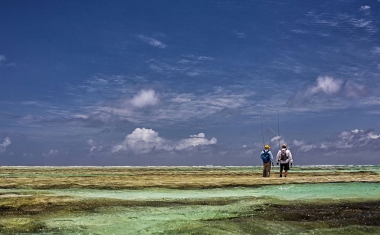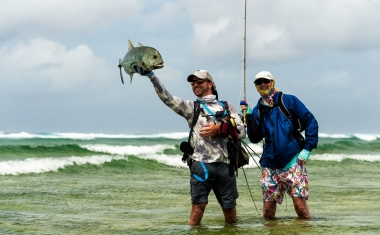
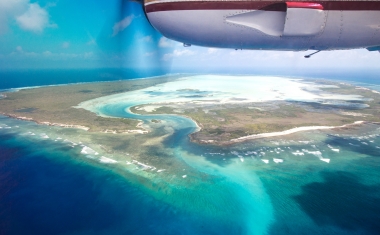
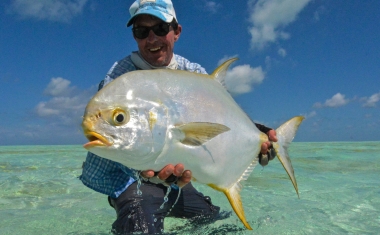
Astove for many was the pinnacle atoll of the original Assumption, Cosmoledo, Astove mother boat accessed fishing program. Lacking any location for a safe anchorage it was a case of float in and float out over a 36-hr period. That has all changed now that a well appointed lodge has been built on the atoll serviced via a small runway. With accommodation for only 6 anglers each week it is the most exclusive of all the atolls in the Indian Ocean and its reputation for producing enormous GT’s goes unchallenged!
1
Astove Atoll-Introduction & History
Astove is situated 1055km south-west of Mahé and forms part of the remote Aldabra group of atolls. It’s a small and unique atoll that spans six kms from north to south and just under four kms from east to west at the widest points. The shallow lagoon has one small entrance, and due to its elevation, a phenomenon occurs whereby the tide falls like a river for ten hours of the 12-hour tidal cycle and then turns to flood the entire lagoon in only two hours.
Astove atoll has a rich but desolate history and has been the cause of countless shipwrecks dating back to 1500 AC. It has been said that ships used to pass by in the hope of rescuing and then enslaving abandoned souls on the island. It was also the atoll where Jacques Cousteau filmed some of the acclaimed underwater documentary ‘The Silent World’ along the edge of the "Wall".
The "Wall" of Astove is breathtakingly beautiful and is best described as looking down into the Grand Canyon. It consists of the flat and reef dropping a vertical 90 degrees from ankle deep water to over 1000 metres over a short distance. The "Wall" is still known as one of the best dive sights on this planet.
The terrain varies from hostile shore breaks on the windward side, to at calm coral flats on the outside and snow-white sand flats inside the lagoon. Its unique lagoon system is home to countless aquatic and seabirds as well as the endemic Caspian turn, dimorphic egret and red-tailed tropic bird along with a population of over 150 giant Aldabra tortoises.
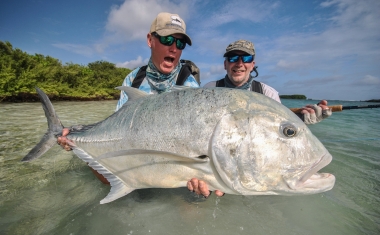
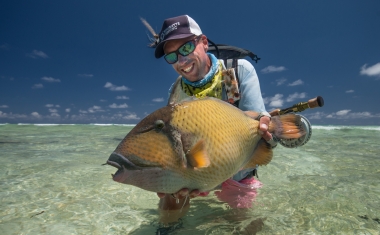
2
The Fishing
The species and quarry you are likely to catch on Astove is as wide and varied as any saltwater location in the Indian Ocean however it is the size of the biggest GT’s that really marks out Astove from other locations. Anglers have been landing an impressive average of 6 GT’s / week over the short 10-week season with many of these monstrous fish being caught whilst wading the white sand flats with the magical 1meter mark being broken on several occasions each season. Bonefish, Triggerfish, Barracuda, Milkfish make up some of the compliment of additional flats caught species and then of course there are the blue-water species that can be caught just offshore including Sailfish, Wahoo, Dogtooth Tuna, Yellowfin Tuna, and Bluefin Trevally. These can be teased to the surface on fly-rods and tackled with poppers and lures.
3
Key Fish Species
Giantb Trevally: These are the most sought-after gamefish and hence the primary target of anglers fishing the atolls. They are fearsome predators growing to over 100lbs and will test fly tackle like no other salt-water gamefish. Giant Trevally, or GTs as they are commonly called, venture onto the flats on a pushing-tide, and are the alpha predators of these atolls. They are fearless and ruthless predators and will attack virtually any large baitfish pattern cast in their path. Once hooked, they are a handful on a fly rod and only the strongest rods and reels will subdue these bruisers. Being a resident of the reefs, once hooked, the fish’s initial reaction is to seek refuge in the nearest reef, making them a challenge to land. Consequently, any large fish hooked must be held away from the reefs and coral bommies at all costs. Anglers-wade fish for GTs during the pushing tide, and then fish off the atoll’s numerous islands once the flats are too deep to wade.
Milkfish: Milkfish are algae and weed eaters and until fairly recently were considered virtually impossible to take on a fly. Techniques developed by anglers on Alphonse Island have unlocked the secrets needed to entice Milkfish, to take and they are now targeted almost exclusively by some anglers. Pound for pound Milkfish are considered one of the strongest flats fish, and once hooked can often require a boat for the angler to stand a chance of landing them. The milk fish at Astove are somewhat smaller than that of Alphonse, but appear in larger numbers.
Indo Pacific Permit: Also, known as pompano, as its member of the Carangid family and a relative of the Atlantic permit. Astove has a healthy population of permit, which is spread throughout the entire fishery but most densely found at the upper section of Astove lagoon. With the numbers of permit caught ever increasing from season to season, if you are after achieving a “Grand Slam” this should certainly be your destination of choice. The Alphonse guides have near-perfected the art of catching these fish, considered the holy Grail of saltwater fly fishing!
Bonefish: Bonefish are common to the extent that they can almost be forgotten! On Astove specimens up to 9lbs are common. The exquisite white sand flats are ideally suited for Bonefish. Bonefish are consistent on a neap and spring tide and are a fantastic species to target in a group or by singling out tailing fish. The lagoon is home to more juvenile fish whilst the reef edge under the ‘cliffs’ are home to the larger bones.
Yellow Margin & Moustache Triggerfish: Trigger fish are opportunists, feeding mainly on small crustaceans, which makes them perfect targets on a fly. Astove offers great opportunities when it comes to targeting Yellowmargin Trigger fish. Moustache Trigger fish are the largest of the three species that can be caught at Astove.
Barracuda: There are some monsters out there. Menancing in appearance with incredible bursts of speed that will demolish drags on all but the most sturdy reels
Other Species: This has always been one of the huge attractions about Astove. Amazing variety with some amazing fish that can even have the guides scratching their heads to identify!
4
Big Game Fishing
The offshore fishing starts metres from the edge of the flats where you can test your tackle against species like yellowfin tuna, dogtooth tuna, wahoo and sailfish. The variety of grouper and snapper that can be caught while dredging adds a new dimension to the amount of species you may tick off your list.
5
Astove Lodge
Uninhabited since 1969, Astove makes for a wild experience. To ensure that the atoll stays pristine, Astove Island Lodge only caters to six guests per week. The newly renovated lodge is very comfortable, accommodating its guests in single ensuite and air-conditioned rooms that surround a central courtyard. The lodge has a comfortable lounge as well as an indoor and outdoor dining area. Guests will enjoy attentive service as well as exquisite dining. The menu usually comprises of an English breakfast in the morning, a packed lunch choice to take to the flats and a Creole buffet dinner served in the dining room. The Astove Island Lodge staff includes an Alphonse Fishing Company manageress and local IDC staff and is operated in such a way as to maximize fishing time.
6
Guides and Skiffs
All Astove trips are led by a team of world class professional fly fishing guides who have amassed a very considerable amount of hard–earned experience fishing the waters of the Indian Ocean. Each guide is a qualified skipper, has first aid experience and is extremely experienced with regards all facets of fly fishing in a remote saltwater destination such as that at Astove. Their passion and dedication is infectious and rest assured they will definitely go the extra mile in search of your fish of a lifetime.
There are four 20ft mini-Mahé tender boats that have been specifically designed for fly fishing the outer atolls as well as the blue-water. In addition, there are two Mitzi skiffs situated inside the lagoon.
7
The Season
Astove is open to anglers from early November to late April with a break over the festive period. This avoids the unstable weather patterns that can be experienced outside of this period. You can have excellent fishing at any stage during the season. Weeks with full or new moons tend to be at a premium as the increase in tidal range and flow of water, in and out of the flats, benefits the GT’s that lie in ambush! When fishing for the flats species the opposite may apply. As conditions will change over the 6 days fishing you should always experience a taste of both and the variety experienced over any week is one of the major attractions when fishing in the Indian Ocean.
8
Typical Itinerary
Day 1
Arrive at Mahe one day prior to your trip
Day 2
-Fly from IDC Hangar in MAhe, via Alphonse to Astove
-Arrival, lunch and orientation
-Unguided fishing
Day 3-8
-07.30 Breakfast
-08.30 Depart Fishing
-Return to Lodge 17.30 / unguided fishing to sunset
-Evening Meal
Day 9
-Breakfast
-Return Flight to Mahe (3hrs)
-International flight home
9
2024 Rates
Season
November - April
Rate
$17,370 USD single accom
Neap Tide -10,555 USD sharing
-11,255 USD single
-Single Skiff supplement $3,000 –Max 2 available
Package Includes
-Seven (x7) nights at Astove Lodge
-Six days guided fly-fishing with guide and skiff shared between 2 anglers
-Price includes full board
-Rod and reel rental
-Soft drinks and wine with dinner
-Laundry
-Includes return domestic flight: Mahe - Astove
Note
Price does not include international flights, alcoholic drinks, gratuities, ground transfers on Mahe, travel and medical insurance, fly lines and flies, $210 Conservation fee, telephone or internet charges
Lodge capacity is 6 anglers.
Best Times to Go
Weeks with full or new moons tend to be at a premium as the increase in tidal range and flow of water, in and out of the flats, benefits the GT’s that lie in ambush! When fishing for the flats species the opposite may apply.
10
More Photos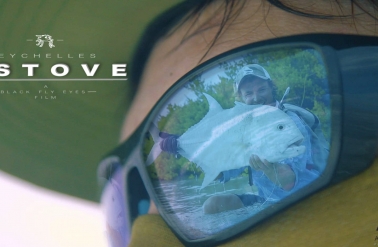
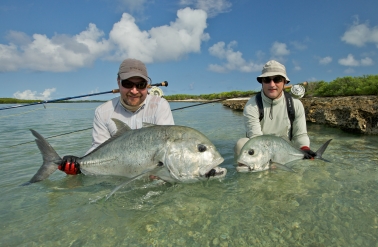
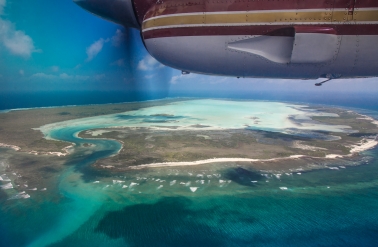
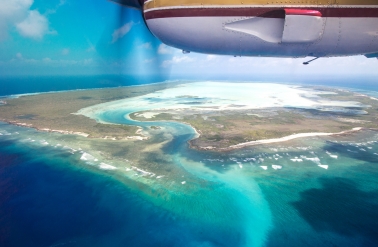
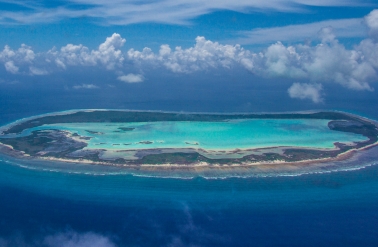
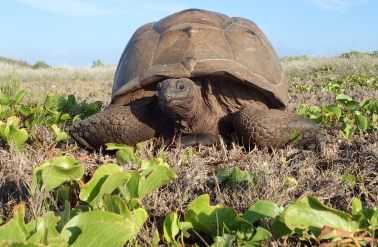
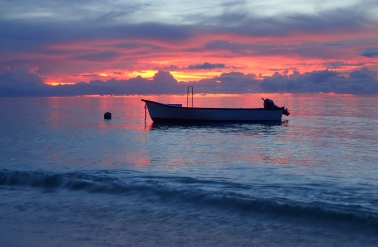
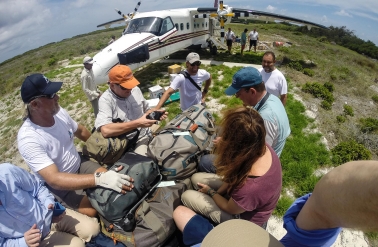
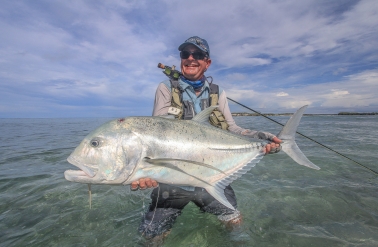
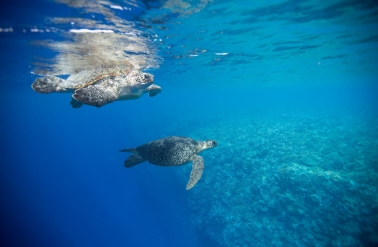
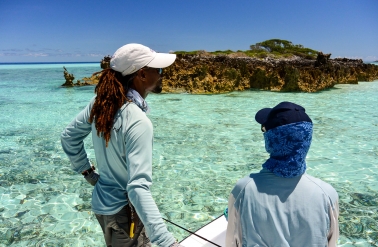
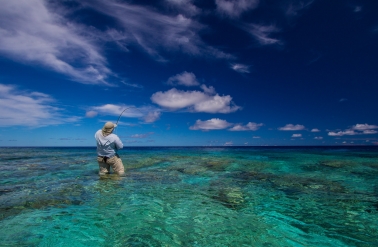
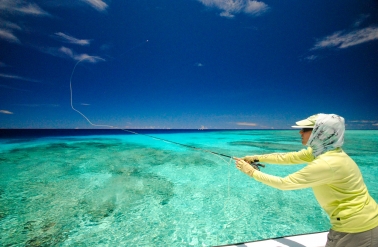
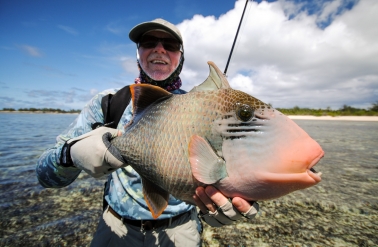
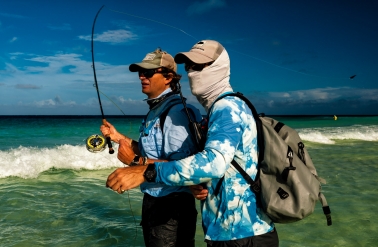
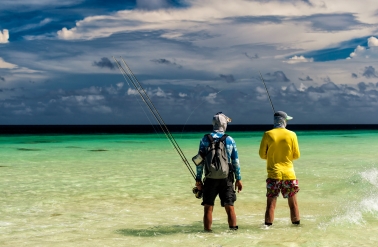
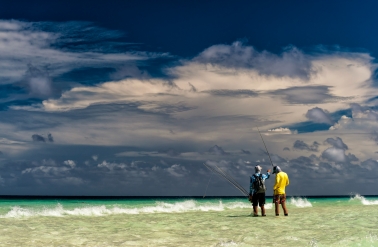
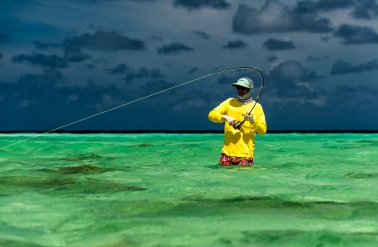
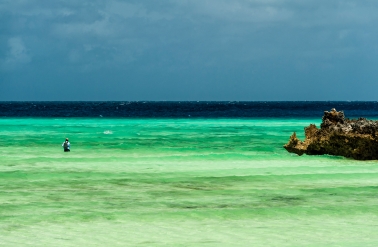
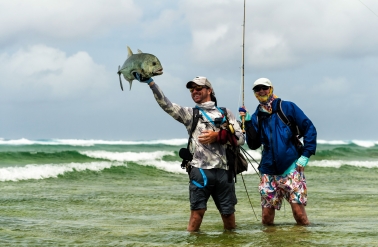
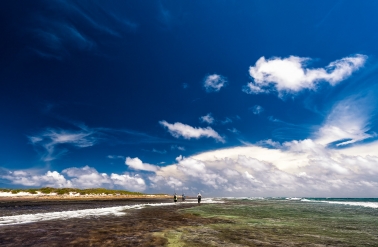
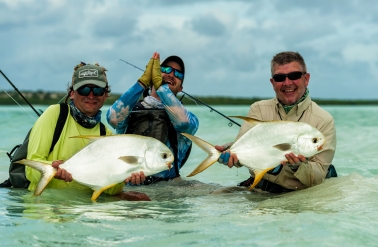
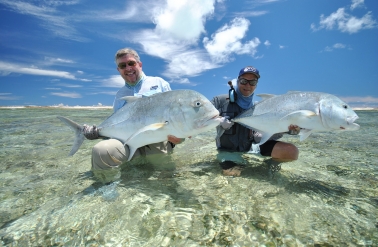
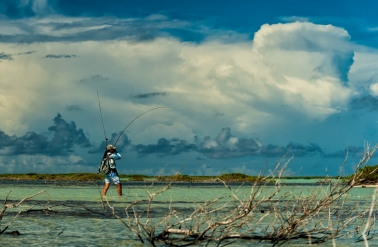
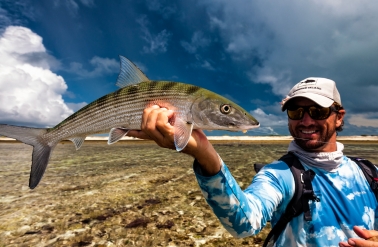
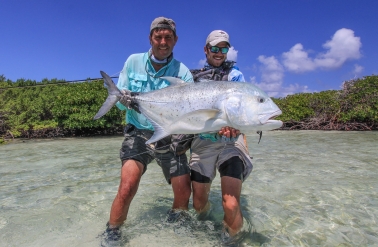
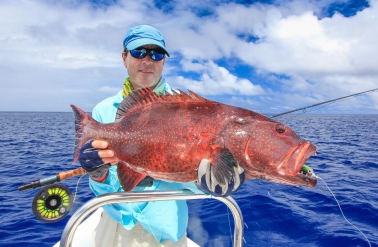
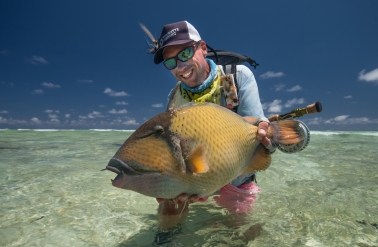
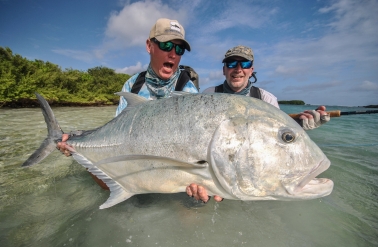
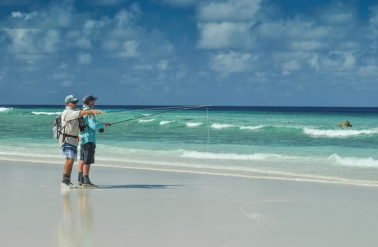
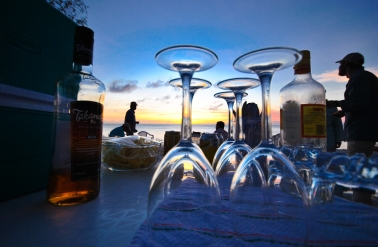
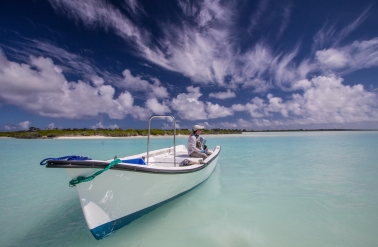
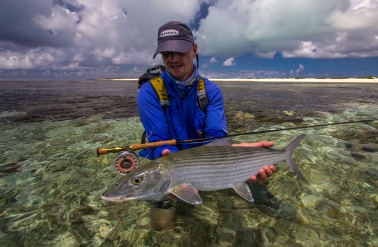
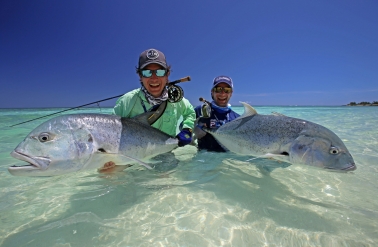
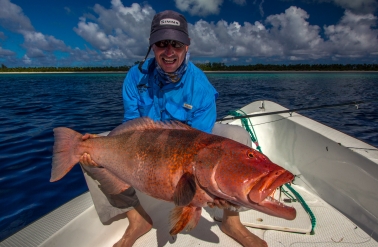
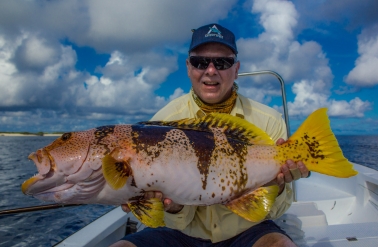
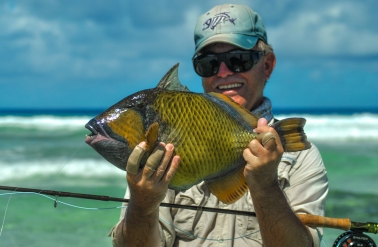
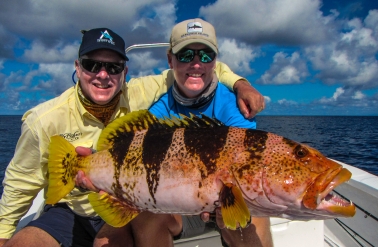
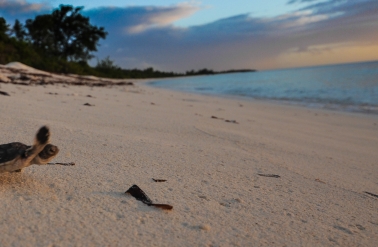
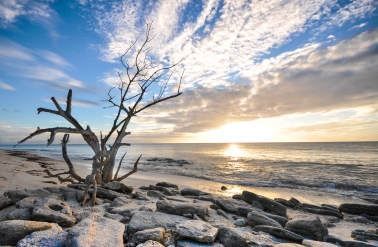
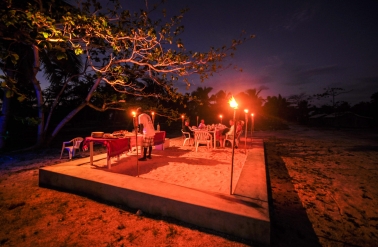
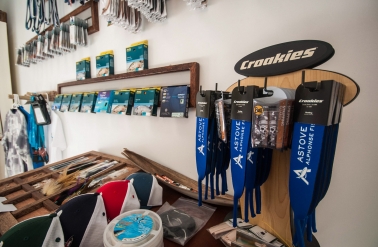

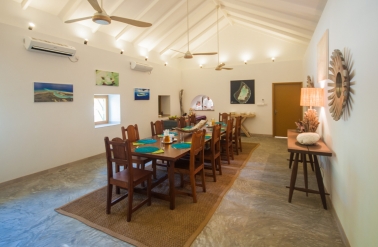
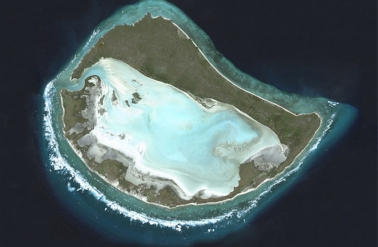
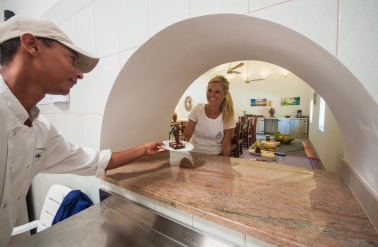
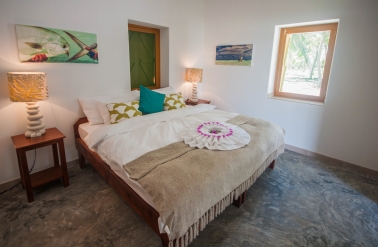
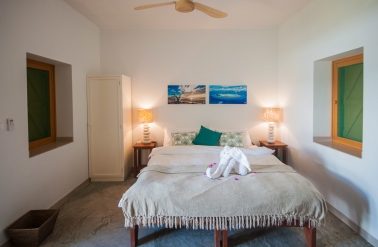
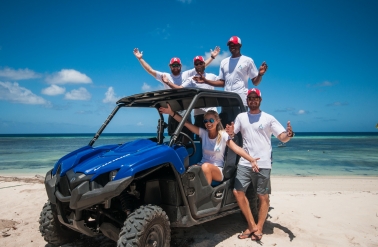
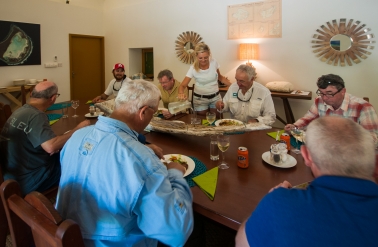
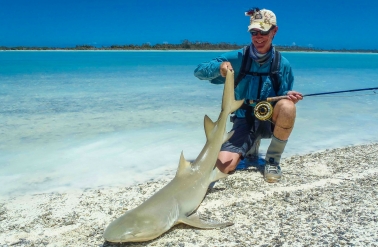
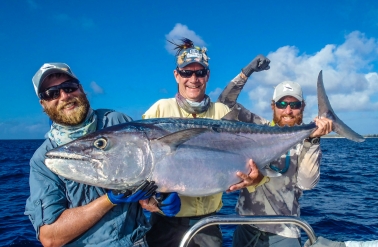
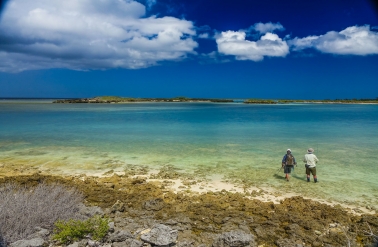
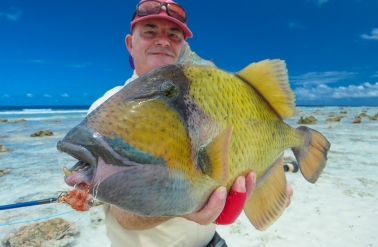
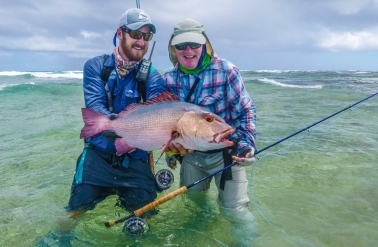
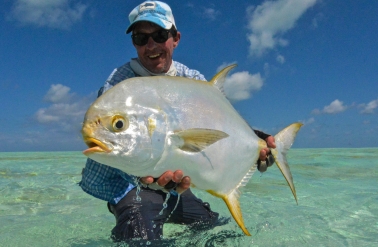
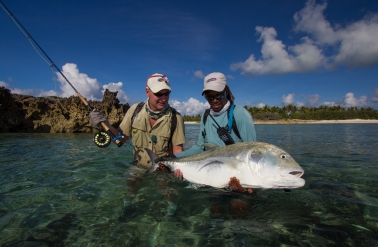
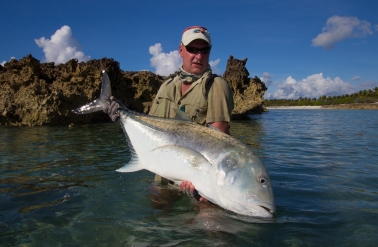
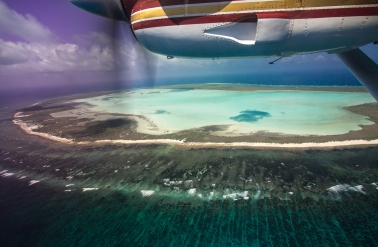
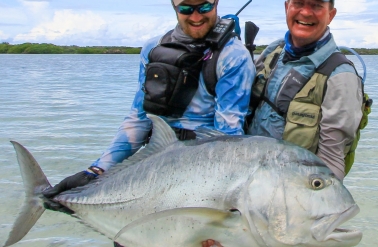
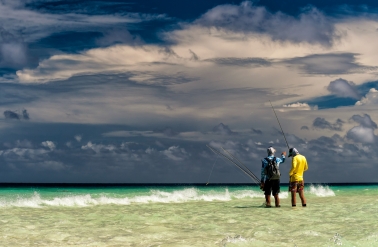
11
Recent VideosOur Aim
Our Aim is to share our combined knowledge of fly fishing holidays and fly fishing vacations around the world to make your next river fishing, lake fishing or salt-water fly fishing holiday the best ever.
Our Promise
We do not charge a commission over and above the standard rates set by a fishing lodge.
Our advice and experience is based on first hand knowledge of the lodges we recommend.
We will always offer you any currently available promotions or discounts.
Our information is based on personal experience and is unbiased towards any lodge or operation.
We will always strive to ensure that your fishing trip is optimised to meet both the best seasonal conditions.
Contact
If you would like to know more about the fishing in Seychelles, please contact us and we will provide you with more details. For availabilities, prices, pre trip information, booking form etc. please contact:
Write a Recommendation!
It’s easy. Just email your name and your recommendation to [email protected]. Please tell us about your trip to Seychelles and attach any photographs you would like to share. Please remember that the submitting of your recommendation is considered a release of permission for your testimonial to be used by WhereWiseMenFish for promotional purposes.
